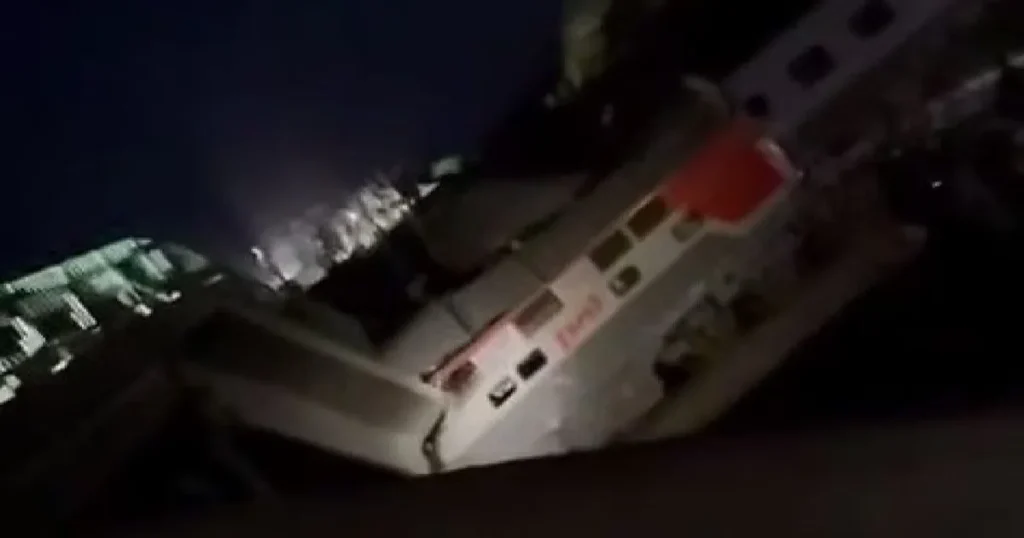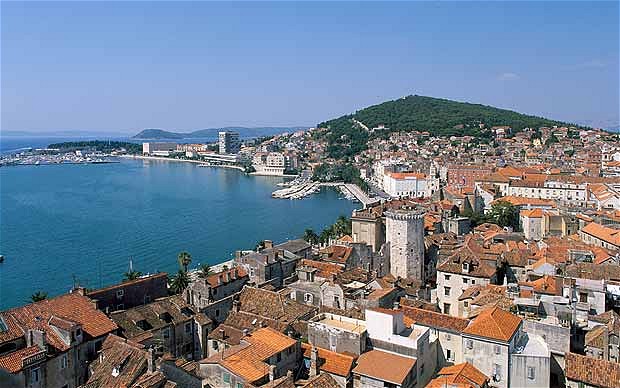
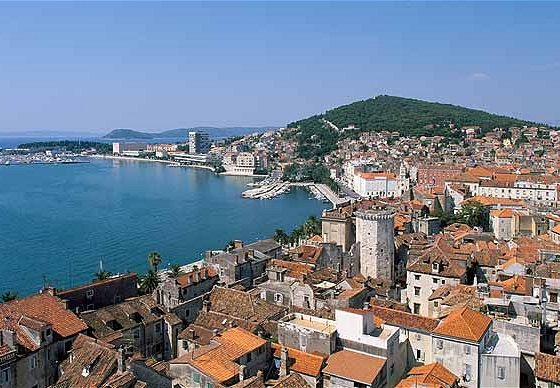
Exploring Croatia
Split (Spalato) is one of the jewels of the Dalmatian region, the largest coastal city on the Adriatic coast and the second largest in the country after the capital Zagreb
Split (Spalato) is one of the jewels of the Dalmatian region, the largest coastal city on the Adriatic coast and the second largest in the country after the capital Zagreb.
Brief history
In the 4th century BC the first Greek colonies were Tragurion (Trogir), Epetion (Stobrec) and Salonae (Solin).
Roman Salonae was an administrative centre of Illyria and later became the capital of Dalmatia province. It is a key archeological site on the east coast of the Adriatic and touches the Northern suburbs of today’s Split.
On the Split Peninsula near Salonae on the Bay of Aspalathos (Greek word for the Spanish broom bush), was a small Greek settlement of the same name, called Spalatum in Roman times.
Gaius Aurelius Valerius Diocletianus was an Illyrian probably born in Salonae in 245 who became emperor in 284 and a ruthless persecutor of Christians. He started building his castle on present day’s Split, intending to retreat to it after his abdication for health reasons in 305. He would reside in the building until his death in 316 at the age of 71.
Stone materials were brought from quarries in Trogir and on the island of Brac.
It was a fortified palace on a quadrangular ground plan surrounded by strong walls and massive defence towers.
In the 7th century, Avars and Slavs destroyed Salonae, the population fled to the outlying islands or followed a certain Severus, taking refuge inside the palace compound which later became the medieval city of Split.
After spending most of the Early Middle Ages under Byzantine rule, the city became part of the Croatian State under king Peter Kresimir IV in the 11th century and a free city in 1108 under king Koloman.
It was under the domination of the Venetian Republic in 1420 until the fall of the Serenissima in 1797 under Napoléon who ruled it from 1806 till 1813. From 1813 till 1918, Dalmatia was part of the Austrian Empire and after World War I joined the Kingdom of Serbia, Croatia and Slovenia which became the Kingdom of Yougoslavia in 1929. During World War II, it was occupied first by Italy and later by Germany in 1943 and finally liberated in October 1944. From that date on, it became a city within the Croatian Republic, part of Federal Yougoslavia, which was dissolved after the War of Croatian Independence (1991-1995).
Major Sights
The heart of the city was listed by UNESCO as a World Heritage Site in 1979, with Diocletian’s Palace as the major attraction : it is the best preserved antique imperial palace in the world. Diocletian was a successful military captain who fought against rebels in Egypt in 297-298 and brought back some black marble sphinxes that can still be found on the
palace grounds, together with numerous precious materials from Egyptian temples and buildings. The Emperor was revered as a deity (Jupiter’s Son).
Key historical monuments are located within the Palace which covers an area of about 30000 sq m. It is built in the shape of a slightly deformed quadrilateral, measuring 215 m on its longer sides and 180 m on the shorter ones. A transverse street – Decumanus — running from east to west, divides the complex in two parts. The outer defence wall is protected by a total of 16 towers and the palace has four access gates called Gold (Porta Aurea), Silver, Iron and Brass. The groud-floor halls, called « Diocletian’s Cellars », serve as substructures for the imperial apartments.
The most impressive architectural complex is the Peristyle giving access to the apartments and communicating with the Mausoleum built in 316 after the ruler’s death. It is used as a stage for the theatrical and musical productions of the Split Summer Festival. It is also the location of the city’s most popular café called the Luxor. Next to it stand the Grisogono-Cipci Palace and the City of Split Museum housed in the Papalic Palace.
When the Palace became a town, the Mausoleum became St Mary’s Cathedral soon after named Cathedral St Domnius, a bishop who was Diocletian’s first martyr and patron saint of Split . A belfry (bell tower ) in mixed Gothic-Renaissance style was added in the 13-14th century and a circular crypt below the mausoleum was converted into the church of St Lucy.
Not to be missed in the cathedral : the 13th century wooden portal (best preserved of its kind) with its walnut door panels of 530 x 360 cm, carved originally on a red background with gilded figures in relief. The Romanesque stone pulpit, the carved wooden choir stalls,
the Baroque altar of St Domnius with an Early Christian sarcophagus, the altars of St Duje and St Stasius and the northern Baroque altar of St Domnius.
The former quadrangular Jupiter’s Temple became the baptistery of the Cathedral.
Narodny Trg (People’s Square), also called Pjaca, is the main square at the heart of the Old Town where stands the Communal Palace (former City Hall) connected with Korepic Palace by a Late Gothic double window. On one corner stands the late romanesque Ciprianis Palace with a carved relief figure of St Anthony. In front of the Roman Palace gate stands a Romanesque house-fort with Gothic belfry and a Romanesque clock.
Vocny Trg (Brother Radic Square), to the south of Narodny Trg. On the north side stands the 18th century Milesi Palace and in front of it the bronze statue of the famous Croatian poet Marko Marulic by Ivan Mestrovic. On can also see the Baroque Tartaglia Palace on the east side and the Little Papalic Palace on the west side.
Waterfront
The seaside promenade lined with palm trees, also called Riva, is always crowded and teeming with life during the high season (summer and Advent) with its numerous cafés and boutiques.
Trg Republike
It is the western limit of the old town centre. It houses the arcade-lined neo-Renaissance building of the Prokurative. Along the square runs the pedestrian street Marmontova ulica, named after Napoleon’s Marshal Auguste Viesse de Marmont who performed massive renovation and modernisation during his short rule.
There are many other places of interest to discover : numerous churches, ruins, parks and the museums on the Marjan Peninsula, notably the Ivan Mestrovic Gallery building. The top of Marjan Hill affords a spectacular panoramic view over the city.
Split is possibly the most interesting city in Croatia : it is awaiting your visit and ready to welcome you to show all its treasures.
Jacques CAMPE
25/01/2016
Достопримечательности Россия
Лучшие тематические парки развлечений в Европе
В Европе расположены одни из ведущих в мире парков развлечений с захватывающими дух аттракционами.
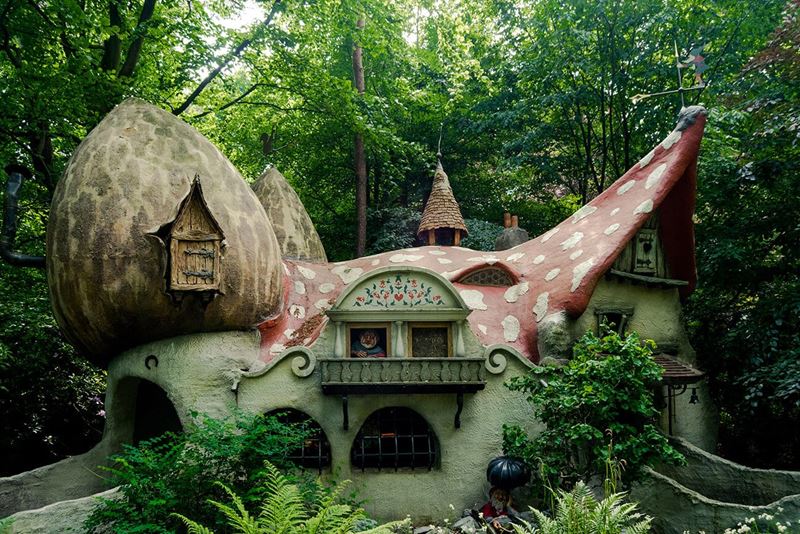
Мы расскажем вам о парках, которые в последние годы демонстрируют наибольший рост посещаемости, а также выясним, почему некоторые из ведущих парков продолжают оставаться столь успешными.
1. Диснейленд-парк, Диснейленд Париж, Франция — посещаемость 9 930 000 человек
Парк Диснейленд является флагманским объектом курорта Disneyland Paris, и его проверенные временем аттракционы привлекают большое количество гостей. К ним относятся «Мир тесен», «Гора Большого Грома», «Пираты Карибского моря» и «»вездные войны», «Гиперкосмическая гора».
В 2021 году в парижском Диснейленде была введена новая программа обеспечения доступности, предоставляющая персональную автономию посетителям с ограниченными возможностями и особыми потребностями.
«Наша новая программа доступности — это важный шаг вперед в нашем стремлении обеспечить доступность Disneyland Paris, позволяющий каждому гостю ощутить магию парка Disneyland и Walt Disney Studios Park», — сказал Даниэль Делькур, старший вице-президент Disneyland Paris.
В 2022 году парижский Диснейленд отметил свое 30-летие.
В 2023 году парк объявил о ряде мероприятий и обновлений, посвященных компании Pixar. Среди них — новая комната по мотивам фильма Disney и Pixar «Лука» (2021 г.) в ресторане Pizzeria Bella Notte и преобразование ресторана Fuente Del Oro в мексиканской тематике во Frontierland в Casa de Coco — Restaurante de Familia по мотивам фильма Disney и Pixar «Коко» (2017 г.).
2. Европа-парк, Германия — посещаемость 5 400 000 человек
Самым загруженным тематическим парком Европы, не принадлежащим компании Disney, является Europa-Park в Германии. В 2019 году семья Мак, владеющая парком, приступила к осуществлению самой крупной инвестиции — строительству долгожданного аквапарка Rulantica.
Построенный на сумму около 180 млн. евро, этот преимущественно крытый объект выполнен в привлекательной скандинавской тематике. Некоторые из его горок и аттракционов являются первыми в своем роде в Германии. Объект площадью 32 600 кв. м непосредственно связан с шестым тематическим отелем курорта Europa-Park — Krønasår. В 2021 году к «Рулантике» добавился еще один отель — «Свальгурок».
В целом именно внимание к деталям делает Europa-Park таким привлекательным местом для посещения. Аттракционы и развлечения распределены по тематическим зонам, представляющим 18 европейских стран. В 2020 году в парке была открыта многомиллионная реконструкция аттракциона «Пираты Батавии».
Недавно в парке появилась новая концепция развлечений — Eatrenaline.
3. Эфтелинг, Нидерланды — посещаемость 5 430 000 человек
Следующим в списке лучших тематических парков Европы является Эфтелинг. В 2019 году посещаемость тематического парка №1 в Нидерландах составила 5,4 млн. человек. Однако за последние 10 лет этот сказочный парк, расположенный неподалеку от Тилбурга, продемонстрировал исключительные результаты: в начале десятилетия его посещаемость выросла с 4 млн. человек в год.
Эфтелинг также ввел 365-дневный календарь работы и вторую деревню отдыха, Loonsche Land. Все это способствовало росту числа посетителей и формированию международного профиля.
Поклонники темных аттракционов высоко оценили аттракцион Symbolica, который был открыт в 2017 году. Кроме того, большие надежды возлагаются на предстоящий перезапуск классического аттракциона Droomvlucht («Полет мечты»). В то же время подводная горка Baron 1898 компании B&M заслуживает внимания не только благодаря великолепному тематическому оформлению, но и благодаря захватывающим ощущениям.
ДостопримечательностиКультура, ТрадицииМаршрутыОбзорыСтатьи по странам Россия
Кострома музейная. Путешествие в мир цыганской культуры и быта
Колорит и таинственность, пестрые юбки, браслеты, звенящие бусы и черные локоны, лошади, романс, гитара, кочевая кибитка…. Все это можно сказать про цыган — отдельную цивилизацию, существующую много веков параллельно нашей…
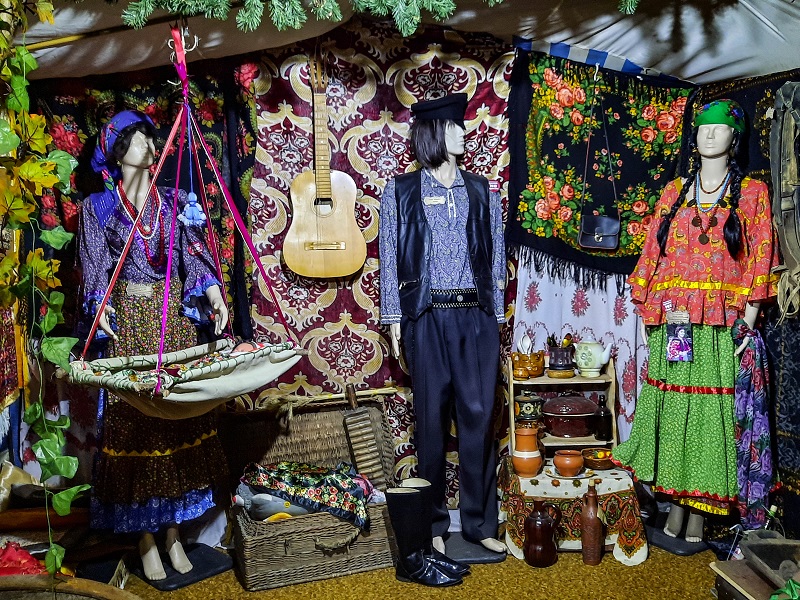
Почему они не смешались с народами, среди которых жили? Что мы о них знаем? То, что они с рождения прекрасно поют и танцуют, больше жизни любят лошадей, что они находчивы, хитры, вороваты, живут табором. Не много, практически ничего!
На сегодня это единственный кочевой народ, у которого нет своей страны, но, не смотря на это, у этого народа есть столица, хоть и не официальная (г.Сороки в Молдавии), есть свой гимн и свой флаг. И это, наверное, единственный народ, сохранивший при своей разрозненности язык, культуру и традиции, а еще почти не меняющиеся многие годы детали одежды, украшения и свои эталоны красоты.

С удивлением узнала, что этот народ – выходец из Индии. Яркие цвета, бусы из монет, множество украшений – все это отголоски народной праздничной одежды индусов. В наше время, цыган можно встретить во всех городах, странах и на всех континентах, говорят они на разных языках, впитывая диалекты и обогащая свой язык и традиции опытом тех народов, на территории которых они проживают.
Душу цыган сложно постичь без глубокого погружения в истоки зарождения этого народа, не послушав их песен и не увидев их танцев. Лирика цыганского народа стала знакомой всему миру через их проникновенные голоса, их веселье и задор. Ну а танцы — шумные, яркие, раскованные, с летящими подолами пышных юбок и звоном монет на груди у танцовщиц, стали символом радости и свободы изначально на ярмарках и праздниках, а сейчас на конкурсах среди профессиональных хореографических коллективов.
Кстати, подарком от цыган для нас является романс. Мне кажется, нет человека на земле, душу которого не трогает удивительно глубокая мудрость текста и задушевная музыка романса.

Сегодня прикоснуться к традициям этого загадочного народа можно приехав в Кострому. Именно в этом русском городе создан единственный Музей цыганской культуры и быта.
Коридоры музея, его комнаты заполнены предметами, одеждой, фотографиями, картинами, которые отражают тысячелетнюю историю народа, представители которого, рассыпались по миру как бусины одного ожерелья.
Хранитель музея, Андреев Сергей Борисович, эмоционально расскажет о том, чего мы не знаем — взаимоотношения цыган с коренными народами разных стран, традиционные занятия цыган, влияние европейской моды на цыганский костюм, их вклад в музыкальную культуру и кинематограф Европы и, конечно, России.

От входа — небольшой коридор истории СССР. Все экспонаты коридора – старые фотографии и документы, показывающие, как цыганам жилось в Стране Советов. А еще – история. Геноцид цыган во время многочисленных войн и особенно II Мировой. Солдаты Великой Отечественной. Хоть и нет у цыган своей страны – они шли воевать за СССР, становились Героями.

Отдельная экспозиция посвящёна театру «Ромэн», в котором о Костромском музее, хорошо знают. Здесь собраны костюмы, афиши, билеты, программки, фотографии. Среди экспонатов есть театральный костюм, лично подаренный Сергею Борисовичу народным артистом СССР, руководителем театра Николаем Сличенко. Из последних поступлений — наряд цыганки принадлежащей к касте котляров. Традиционное занятие этой касты не гадание и не лошади. Это ремесленники — кузнецы и лудильщики посуды.
Дальше – типичная цыганская комната, где всё, как положено — золотые чайные чашки, комоды, шкафы и неизменное пианино.

А еще в музее есть уголок с книгами, на полках собраны самоучители, словари и азбуки. И в финале сюрприз для посетителей – уголок цыганского театра кукол, представления которого увлекают не только детей, но и взрослых.

Основатель музея медленно, шаг за шагом погружает посетителей в тот мир, которого мы совсем не знаем. В мир, который он бережно хранит. Мир, который заслуживает внимания и который просто необходимо сохранить для будущих поколений. Ведь это наша история и она заслуживает бережной памяти.
Адрес музея: Кострома, ул. Козуева д. 3/46
Телефон: 8 (4942) 50 17 34
ДостопримечательностиОбзорыСтатьи по странамТранспорт Россия
Маршруты путешествий по стране в формате «поезд-отель»
Любите путешествовать на поезде? РЖД предлагает туристам разные маршруты путешествий по стране в формате «поезд-отель».

Пассажиры туристических поездов могут спланировать свою экскурсионную программу самостоятельно или в пути у проводника оформить отдельные экскурсии. Мы собрали лучшие маршруты в одной подборке. Сохраните себе и не забудьте поделиться с друзьями.
«Сочи»
Поезд № 927/928
Туапсе – Сочи – Гагра (Абхазия)
Тур в Абхазию можно совершить на 1 день или 2 дня/1 ночь. Автобусные экскурсии по Абхазии можно приобрести во время поездки у проводника.
Все вагоны поезда оформлены в ретро стиле времен СССР.
«Серебряный маршрут»
Поезд № 924/923
Москва – Псков – Великий Новгород – Рыбинск – Ярославль – Москва
Красоты древних русских городов вы увидите всего за одни выходные.
«Жемчужина Кавказа»
Москва – Майкоп – Нальчик – Грозный – Махачкала – Дербент – Кисловодск – Москва
За 7 дней поездки можно увидеть побережье Каспийского моря, горные пейзажи, знаменитое озеро Казеной, мечеть «Сердце Чечни», Сулакский Каньон, Эльбрус, древний Дербент и другие красоты.
«В Карелию»
Поезд № 928/927
Москва – Петрозаводск – Сортавала – Выборг – Москва
На участке пути от станции Хелюля до Сортавала туристический поезд будет следовать на паровозной тяге.
«В Сибирь»
Поезд 926/927
Москва – Казань – Тюмень – Тобольск – Пермь – Москва
5 ночей/6 дней. Доступны вагоны классов «Люкс» и «купе». Туристы смогут посетить музей-заповедник «Казанский Кремль», термальный СПА-курорт в Тюмени, туристский комплекс «Абалак» в Тобольске и другие интересные объекты.
«Цветущая степь»
Москва – Ростов-на-Дону – Элиста – Москва
За 4 дня тура путешественники смогут увидеть не только интересные города с самобытной культурой, но и станут свидетелями уникального явления – цветения калмыцкой степи.
При написании использовались материалы публикации https://t.me/trip2rus2/81












